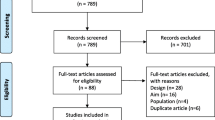Abstract
Our goal was to develop a comprehensive conceptual research framework on mode of delivery and to identify research priorities in this topic area through a Delphi process. We convened a multidisciplinary team of 16 experts (North Carolina Collaborative on Mode of Delivery) representing the fields of obstetrics and gynecology, neonatology, midwifery, epidemiology, psychometrics, decision sciences, bioethics, health care engineering, health economics, health disparities, and women’s studies. We finalized the conceptual framework after multiple iterations, including revisions during a one-day in-person conference. The conceptual framework illustrates the causal pathway for mode of delivery and the complex interplay and relationships among patient, fetal, family, provider, cultural, and societal factors as drivers of change from intended to actual mode of delivery. This conceptual framework on mode of delivery will help put specific research ideas into a broader context and identify important knowledge gaps for future investigation.


Similar content being viewed by others
References
Martin, A. J., Hamilton, B. E., Sutton, P. D., Ventura, S. J., Mathews, T. J., Osterman, M. J. (2010). Births: Final data for 2008. National Vital Statistics Reports, 59(1). Available from http://www.cdc.gov/nchs/data/nvsr/nvsr59/nvsr59_01.pdf. Accessed October 2011.
National Institutes of Health State-of-the-Science Conference Statement: Cesarean Delivery on Maternal Request March 27–29, 2006. (2006). Obstetrics and Gynecology, 107(6): 1386–1397.
Visco, A. G., Viswanathan, M., Lohr, K. N., Wechter, M. E., Gartlehner, G., Wu, J. M., et al. (2006). Cesarean delivery on maternal request: Maternal and neonatal outcomes. Obstetrics and Gynecology, 108(6), 1517–1529.
ACOG Committee Opinion No. 394, December 2007. Cesarean delivery on maternal request. (2007). Obstetrics and Gynecology, 110(6): 1501.
NIH Cesarean Conference: Interpreting Meeting and Media Reports (Updated, 10/2006) (2006). Available from http://www.childbirthconnection.org/article.asp?ClickedLink=743&ck=10375&area=2. Accessed October 2011.
Bhopal, R. S. (2002). Cause and effect: The epidemiological approach. In R. S. Bhopal (Ed.), Concepts of epidemiology: Integrating the ideas, theories, principles and methods of epidemiology (pp. 98–126). Oxford: Oxford University Press.
McDowell, I. (2008). From risk factors to explanation in public health. Journal of Public Health (Oxford), 30(3), 219–223.
Brown, B. B. (1968). Delphi process: A methodology used for the elicitation of opinions of experts. Santa Monica: RAND.
Linstone, H. A., & Turoff, M. (Eds.). (1975). The Delphi method: Techniques and applications. Reading, MA: Addison-Wesley.
Martin, J. A., Hamilton, B. E., Sutton, P. D., Ventura, S. J., Mathews, T. J., Kirmeyer, S., et al. (2010). Births: Final data for 2007. National Vital Statistics Reports, 58(24), 1–85.
NIH State of the Science Conference: Cesarean Delivery on Maternal Request. March 27–29, 2006. (2006). Available from http://consensus.nih.gov/2006/cesarean.htm. Accessed October 2011.
NIH Consensus Development Conference on Vaginal Birth After Cesarean: New Insights. March 8–10, 2010. (2010). Available from http://consensus.nih.gov/2010/vbac.htm. Accessed October 2011.
Acknowledgments
This research was funded by Research Triangle Institute (RTI)-International Collaboration Fund.
Author information
Authors and Affiliations
Consortia
Corresponding author
Additional information
NCRC-MOD members are given in “Appendix”.
Appendix
Appendix
Carla Bann, PhD, RTI International, Research Triangle Park, NC; Norma Gavin, PhD, Impaq International, Columbia, MD; Jeanne-Marie Guise, MD, Department of Obstetrics and Gynecology, Oregon Health and Science University, Portland, OR; Suneeta Krishnan, PhD, RTI International, Research Triangle Park, NC; Miriam Kuppermann, PhD, Department of Obstetrics and Gynecology, Epidemiology & Biostatistics and Medical Effectiveness Research Center for Diverse Populations, University of California, San Francisco, CA; Matthew Laughon, MD, MPH, Department of Pediatrics, University of North Carolina at Chapel Hill, Chapel Hill, NC, Anne Lyerly, MD, MA, Department of Obstetrics and Gynecology, Duke University, Durham, NC; Amy MacDonald, CNM, MSN, Department of Obstetrics and Gynecology, Duke University, Durham, NC, Divya Patel, PhD, Department of Obstetrics and Gynecology, University of Michigan, Ann Arbor, MI; John Thorp, MD, Department of Obstetrics and Gynecology, University of North Carolina at Chapel Hill, NC, Anthony Visco, MD, Department of Obstetrics and Gynecology, Duke University, Durham, NC; Suzanne West, PhD, RTI International, Research Triangle Park, NC; Xiao Xu, PhD, Department of Obstetrics and Gynecology, University of Michigan, Ann Arbor, MI.
Rights and permissions
About this article
Cite this article
Wu, J.M., Viswanathan, M., Ivy, J.S. et al. A Conceptual Framework for Future Research on Mode of Delivery. Matern Child Health J 16, 1447–1454 (2012). https://doi.org/10.1007/s10995-011-0910-x
Published:
Issue Date:
DOI: https://doi.org/10.1007/s10995-011-0910-x




